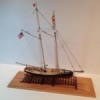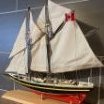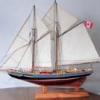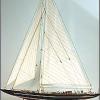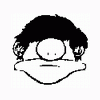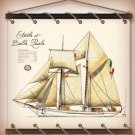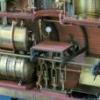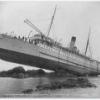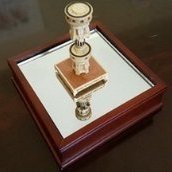MORE HANDBOOKS ARE ON THEIR WAY! We will let you know when they get here.
×
-
Posts
818 -
Joined
-
Last visited
Reputation Activity
-
 _SalD_ got a reaction from PaddyO in US Brig Syren by _SalD_ – FINISHED - 3/16" scale
_SalD_ got a reaction from PaddyO in US Brig Syren by _SalD_ – FINISHED - 3/16" scale
Ship is all repainted and ready for the deck.
-
 _SalD_ got a reaction from canoe21 in US Brig Syren by _SalD_ – FINISHED - 3/16" scale
_SalD_ got a reaction from canoe21 in US Brig Syren by _SalD_ – FINISHED - 3/16" scale
Ship is all repainted and ready for the deck.
-
 _SalD_ got a reaction from jdbradford in US Brig Syren by _SalD_ – FINISHED - 3/16" scale
_SalD_ got a reaction from jdbradford in US Brig Syren by _SalD_ – FINISHED - 3/16" scale
Ship is all repainted and ready for the deck.
-
 _SalD_ got a reaction from Jaggy in US Brig Syren by _SalD_ – FINISHED - 3/16" scale
_SalD_ got a reaction from Jaggy in US Brig Syren by _SalD_ – FINISHED - 3/16" scale
Finished the inboard planking and gave it a couple coats of paint.
I made the cap rail in one piece from a basswood sheet that was 3”x24”x1/16” thick. I used a heavy card stock to trace the top of the bulwarks instead of the wood sheet itself because it was a bit more flexible than the wood and less expensive if I messed it up. I cut the card stock pattern out, traced it on the wood sheet and then cut the rail out with an x-acto knife and sanded smooth.
While the cap rail glue was drying I made the 1/16” square molding strips that go along the outboard edge of the cap rail. I pretty much made these strips similar to the smaller molding strips at the stern by using my drafting triangles to hold the strip steady, then scoring the wood with an x-acto knife and then forming the groove with the compass point held in a mechanical pencil. The only difference was that for these strips I borrowed an idea from Richard’s (rtropp) build log and used a small piece of sandpaper folded in half to clean up the groove.
Before I start the decking I’m going to repaint everything (where's Earl Scheib when you need him) . The sheer plank, the stern cap rail and the upper wale got pretty beat up while installing the inboard planking and cap rail. Now I know why Dirk recommended not painting the black until everything was installed. Live and learn.
-
 _SalD_ got a reaction from canoe21 in US Brig Syren by _SalD_ – FINISHED - 3/16" scale
_SalD_ got a reaction from canoe21 in US Brig Syren by _SalD_ – FINISHED - 3/16" scale
Started chapter 7 (inboard planking) by thinning the bulwarks to the required thickness. Prior to sanding I placed the fillers strips at the stern per Chuck's instructions and also placed some filler at the bow, as Dirk recommended, to help with placing the planks in the bow.
After placing the first 3/16” plank I cut pieces to fit around each sweep. While placing these strips I used a 1/8” spacer to keep all the sweep opening consistent.
For the remaining planks I used the pieces left over from the hull planking. Being consistent, I planked over the gun ports and cut them out later.
I also made up the two sheaves located at the stern and cut the opening in the planking.
-
 _SalD_ got a reaction from tasmanian in US Brig Syren by _SalD_ – FINISHED - 3/16" scale
_SalD_ got a reaction from tasmanian in US Brig Syren by _SalD_ – FINISHED - 3/16" scale
Ship is all repainted and ready for the deck.
-
 _SalD_ got a reaction from Ol' Pine Tar in US Brig Syren by _SalD_ – FINISHED - 3/16" scale
_SalD_ got a reaction from Ol' Pine Tar in US Brig Syren by _SalD_ – FINISHED - 3/16" scale
Ship is all repainted and ready for the deck.
-
 _SalD_ got a reaction from WackoWolf in US Brig Syren by _SalD_ – FINISHED - 3/16" scale
_SalD_ got a reaction from WackoWolf in US Brig Syren by _SalD_ – FINISHED - 3/16" scale
Ship is all repainted and ready for the deck.
-
 _SalD_ got a reaction from Gahm in US Brig Syren by _SalD_ – FINISHED - 3/16" scale
_SalD_ got a reaction from Gahm in US Brig Syren by _SalD_ – FINISHED - 3/16" scale
Ship is all repainted and ready for the deck.
-
 _SalD_ got a reaction from schooner in US Brig Syren by _SalD_ – FINISHED - 3/16" scale
_SalD_ got a reaction from schooner in US Brig Syren by _SalD_ – FINISHED - 3/16" scale
Ship is all repainted and ready for the deck.
-
 _SalD_ got a reaction from GuntherMT in US Brig Syren by _SalD_ – FINISHED - 3/16" scale
_SalD_ got a reaction from GuntherMT in US Brig Syren by _SalD_ – FINISHED - 3/16" scale
Ship is all repainted and ready for the deck.
-
 _SalD_ got a reaction from augie in US Brig Syren by _SalD_ – FINISHED - 3/16" scale
_SalD_ got a reaction from augie in US Brig Syren by _SalD_ – FINISHED - 3/16" scale
Ship is all repainted and ready for the deck.
-
 _SalD_ reacted to usedtosail in USS Constitution by usedtosail - FINISHED - Model Shipways - scale 1/76
_SalD_ reacted to usedtosail in USS Constitution by usedtosail - FINISHED - Model Shipways - scale 1/76
Here is the remade mullion of the correct size:
I trimmed the ends off the mullions and fit it into the window opening, then glued it in. After it dried, I removed the paper from the back of the window, which was easy because it was only glued to the outer frame and I could scrape off any excess glue with an X-Acto knife. I then sanded the front and back by sliding the window over a sheet of sand paper, medium on both sides and fine on the front. And here it is in the opening:
Here is the first window I made:
And the rest so far:
I am finishing up the last window now. I am going to paint these white to match the white trim that I will be putting on the transom. I am pretty please with how these came out, as I have had trouble making similar pieces in the past. The paper backing was the trick for me for these, so I figured I'd share the technique.
-
 _SalD_ reacted to usedtosail in USS Constitution by usedtosail - FINISHED - Model Shipways - scale 1/76
_SalD_ reacted to usedtosail in USS Constitution by usedtosail - FINISHED - Model Shipways - scale 1/76
Thanks guys. Luckily Captain it was only five pintles and gudgeons. The sixth strap is just on the rudder itself so it was breeze to install.
Onto the transom. I started by making the window frames and mullions (I think that is what the inner frames are called?). I decided to make the outer frames from 1/16" square wood, as I knew I would have problems using 1/32". I did use 1/32 by 1/16" for the mullions though. I hope the outer frames don't look too thick. I took pictures through the whole process to document how I made them which I will provide here.
Since I am completely going away from the plans for the transom, I started by making manila templates of each window opening. I made sure that these were a good fit and did not leave gaps in the openings.
I then cut the four outer frames and fit them into the window opening.
I then traced the template onto a piece of paper and cut it out to use as a plan for the window. I cut the top flush with the top edge so that I could push this up to the edge of the metal tray that I used to glue these up. This tray comes with magnets to hold parts while gluing and a lip all the way around to push parts up to. I like to use Lego pieces in the tray because they have nicer square edges than the magnets. I removed the outer frame pieces from the opening and put them in the tray on top of the plan. I then glued each piece to the next and to the paper itself. This helped me get the frames square and held them together better for the next steps.
While that was drying, I made the mullions. I first traced the template of the window opening onto a piece of paper and divided the sides into thirds. (I bet a bunch of you are screaming at this point - Tom stop! That isn't right!).
I then transferred those positions to four pieces of wood for the inner frames.
For the first window. I filed notches half way through the strips at those locations, so that they would fit together like a grating. For the rest of the windows, I got brave and used the Brynes saw with a slitting disk to make the notches, which turned out to be a much better way to go. I am using that saw more and more now that I can see what it can do.
I used a metal clip as a holder for the strips and held two at a time, which ensured that the notches would be the same for both pieces. I set the fence the correct distance from the blade and made sure the two ends were even to run along the fence. I also made sure the strips were flat to the saw table and not the clip riding on the table.
OK, here is how it came out after gluing them together.
I put that aside to dry and took the outer frame off the gluing jig, trimmed the excess paper from edges, and fit it to the opening. I had to do a little sanding of the edges to get a nice fit, but this is where the paper backing really helped hold it together as I sanded. And here it is in the opening.
And here is where all you guys screaming above were waiting for. I went to fit the mullions to the outer frame and said _ Oh s**t !
I forgot to allow for the outer frame when dividing the window opening into thirds.
So, I added the size of the outer frames to the paper and then divided the remaining area into thirds and remade the mullions. Now, this would not be so bad, except I did the same thing on the second window! Duh!
Continued in the next post...
-
 _SalD_ reacted to GuntherMT in Armed Virginia Sloop by GuntherMT - FINISHED - Model Shipways - scale 1:48
_SalD_ reacted to GuntherMT in Armed Virginia Sloop by GuntherMT - FINISHED - Model Shipways - scale 1:48
So I've actually accomplished some more things on the AVS over the last few days, in the form of completing most of the quarter-deck. Today I completed the quarter-deck, and then began drilling holes. Ended up with 510 holes (I think), and only after it was completed and I was editing the photo's to upload did I notice that I missed a pair of holes on a butt joint. Oops. I also managed to knock one out on the quarter deck, so after the poly has dried I'll have to add the 2 missing ones and repair the one that came out.
I got going on things and didn't take any in-progress photo's of the quarter deck, or the tree-nailing except for the first shot.
-
 _SalD_ got a reaction from canoe21 in US Brig Syren by _SalD_ – FINISHED - 3/16" scale
_SalD_ got a reaction from canoe21 in US Brig Syren by _SalD_ – FINISHED - 3/16" scale
Finished the inboard planking and gave it a couple coats of paint.
I made the cap rail in one piece from a basswood sheet that was 3”x24”x1/16” thick. I used a heavy card stock to trace the top of the bulwarks instead of the wood sheet itself because it was a bit more flexible than the wood and less expensive if I messed it up. I cut the card stock pattern out, traced it on the wood sheet and then cut the rail out with an x-acto knife and sanded smooth.
While the cap rail glue was drying I made the 1/16” square molding strips that go along the outboard edge of the cap rail. I pretty much made these strips similar to the smaller molding strips at the stern by using my drafting triangles to hold the strip steady, then scoring the wood with an x-acto knife and then forming the groove with the compass point held in a mechanical pencil. The only difference was that for these strips I borrowed an idea from Richard’s (rtropp) build log and used a small piece of sandpaper folded in half to clean up the groove.
Before I start the decking I’m going to repaint everything (where's Earl Scheib when you need him) . The sheer plank, the stern cap rail and the upper wale got pretty beat up while installing the inboard planking and cap rail. Now I know why Dirk recommended not painting the black until everything was installed. Live and learn.
-
 _SalD_ reacted to popeye the sailor in Andrea Gail by popeye the Sailor - FINISHED - 1:20 scale
_SalD_ reacted to popeye the sailor in Andrea Gail by popeye the Sailor - FINISHED - 1:20 scale
a big thanks to every one for the likes and the kind comments I'd have been around yesterday, but my monitor decided to kick the bucket.........I'm reduced to using our old stand-by........a 12 X 12 LG VGA monitor. everything looks so tiny
a warm hello to you Sal.......always glad to see new faces. I try to be as descriptive as I can. if someone benefits from the info.......I feel that's a big plus
that bevy of chain Carl is for the trawl rig.....or a major part of it. as a matter of fact, I bought some more Friday......another type...'antique copper'. I'm always on the look-out for something cool as for the engine......I want to pull the heads to see if there is any piston damage.....and to see if the right side head has been replaced as well. I'll go with anything that's cheaper to do. it's a wait and see thing.
I'll keep that in mind Patrick.......I would like to do something about it I've even thought of filling them with white glue and dusting them with fine sawdust. could also be a case of the wood shrinking.
I did a bit more on Friday......most of it had to do with the aft section of of the trawl rig. there is a bit of framework involved with it. first went the outer support framing.
the rest of it was soldered in place...I used a file ans sandpaper to clean it up.
a brass pin was installed at the base of the scaffold and dry fitted in place. there is still a bit more to add to it before it sees any paint.
the portholes were finally put where they belong.....before they got lost on the table
the second picture shows the 'glass' better, I think the front support bar was added to the first section of the trawl rig.......still more to go.
as for the hold.....simulated hinges were added and painted. it is now permanently in place on the main deck
all was fine until I attempted to add the eye 'shackles' to the top of the aft section of the trawl rig. I ended up cutting the botched top off and fitting another one.
-
 _SalD_ got a reaction from popeye the sailor in Andrea Gail by popeye the Sailor - FINISHED - 1:20 scale
_SalD_ got a reaction from popeye the sailor in Andrea Gail by popeye the Sailor - FINISHED - 1:20 scale
popeye, just catching up with your build, gorgeous! I also appreciate that you show how you build the pieces, great work.
-
 _SalD_ got a reaction from augie in US Brig Syren by _SalD_ – FINISHED - 3/16" scale
_SalD_ got a reaction from augie in US Brig Syren by _SalD_ – FINISHED - 3/16" scale
I don't wish to bore you with this but after doing a little more reading on deck planking and downloading and reading through Chuck’s original build log I think I have a path forward on my deck layout. Below are three layouts of different deck patterns. The first is Chuck's layout, the second is a 4 butt shift and the third a 3 butt shift. Treenails between the joints are not shown for clarity.
In Chuck’s original build log he uses a three butt shift but uses the bulkheads instead of the ‘actual’ deck beams to space the joints. I believe that’s the same conclusion I came up with after drawing his plank pattern but just didn’t know how to explain it as well.
Chuck’s log (star date 2007):
I also read a few articles from Practical Shipbuilding, by A. Campbell Holms, on deck joints and in Article 336 it states:
Being a structural engineer myself it’s hard for me to ignore rules and specifications (much too anal) so in a round-a-about way, what I’m trying to say is that I’ve decided to use the four butt shift pattern, shown above, for the deck on my model. With the four butt pattern there are not as many joints that will fall off the bulkheads as with the three butt pattern. And in reality with the balsa fillers I have between the bulkheads there will only be four or five joints that won’t have any support beneath them. All that being said, now I have to go and actually do it.
-
 _SalD_ reacted to Timbers_B_Shiverin in US Brig Syren by Timbers_B_Shiverin - Model Shipways - Scale 1:64 - First wooden ship build
_SalD_ reacted to Timbers_B_Shiverin in US Brig Syren by Timbers_B_Shiverin - Model Shipways - Scale 1:64 - First wooden ship build
Hello everyone. Please allow me to introduce myself. My name is Brian, and this is my first model ship build. I have been playing with models (mostly RC cars and planes) for years. I have always wanted to get involved in model ships (I bought Wolfram Zu Monfelds book 20 years ago just because it was so neat) but I guess I have reached a certain maturity (?) and level of patience (I hope) to try and build one. I hope you enjoy watching a rookie hack his way through his first build via this log.
Onto the build…
I decided the MS Syren would be a good start point. As much as I would love the look of a muti-deck 74-gun, I think I should get my feet wet with a single deck, 2 masts and 16 guns. Also, this model has been built by quite a few people who have been generous enough to post their experiences here. Those logs have been incredibly valuable so thanks to all you folks building Syrens.
After some “re-tooling” of the work area to change from planes to ships, the build began.
Chapter 1:
Nothing too special here – just following the instructions. I did a few things differently though:
1. I built the keel holder first. I used it right from the beginning of the build. It was nice to have when placing the rabbet strip.
2. When it was time to bend the rabbet strip up the bow, I used a tip from my airplane days. Perhaps this method has already been shown here? I soaked the strip in water for 10 or 15 minutes. While it was soaking, I used the bulkhead former to trace the bow shape onto some foam board. I cut out the foam board, and then taped the soaked strip to it. I then popped it into the “admirals” weapon of choice (microwave – don’t tell her I said that) for about 30-45 seconds. That took a lot of the fight out of the strip, and it allowed me to easily hold it in place and glue it with medium CA.
3. When it was time to carve the bearding line onto the port side, I traced the laser-marked starboard side onto a clear piece of plastic from some clear packaging I found. I then cut that out and traced it onto the port side. Looking back, there were probably enough laser-marks through the bulkhead former that I didn’t need to do this .
4. I want to add some lighting to the ship. I have already been goofing around with some LED lanterns (http://modelshipworld.com/index.php/topic/9526-164-deck-lantern-lighted/). I would like to light the holds, companionway, binnacal and maybe some random lanterns on the deck. My plan is to run the wiring through the display stand, and up to a connector at the keel. Placing it at the keel allows me to cover the connector with the false keel, should I decide not to do the lighting. I used the thinnest connector I had but it still pokes just slightly through the rabbet. I don’t think this will be a problem for the planking later on.
5. Like some others have done, I added some detail to the stem knee. Not historically accurate, just a mash-up of something from Zu Monfeld's book.
Here's the progress so far (I guess I took this pic before the electrical install):
On to Chapter 2...
-
 _SalD_ got a reaction from WackoWolf in US Brig Syren by _SalD_ – FINISHED - 3/16" scale
_SalD_ got a reaction from WackoWolf in US Brig Syren by _SalD_ – FINISHED - 3/16" scale
I don't wish to bore you with this but after doing a little more reading on deck planking and downloading and reading through Chuck’s original build log I think I have a path forward on my deck layout. Below are three layouts of different deck patterns. The first is Chuck's layout, the second is a 4 butt shift and the third a 3 butt shift. Treenails between the joints are not shown for clarity.
In Chuck’s original build log he uses a three butt shift but uses the bulkheads instead of the ‘actual’ deck beams to space the joints. I believe that’s the same conclusion I came up with after drawing his plank pattern but just didn’t know how to explain it as well.
Chuck’s log (star date 2007):
I also read a few articles from Practical Shipbuilding, by A. Campbell Holms, on deck joints and in Article 336 it states:
Being a structural engineer myself it’s hard for me to ignore rules and specifications (much too anal) so in a round-a-about way, what I’m trying to say is that I’ve decided to use the four butt shift pattern, shown above, for the deck on my model. With the four butt pattern there are not as many joints that will fall off the bulkheads as with the three butt pattern. And in reality with the balsa fillers I have between the bulkheads there will only be four or five joints that won’t have any support beneath them. All that being said, now I have to go and actually do it.
-
 _SalD_ reacted to Keith_W in The Kit-Basher's Guide To The Galaxy
_SalD_ reacted to Keith_W in The Kit-Basher's Guide To The Galaxy
The Captain asked me to make this post, so here it is: how to make balustrades from beads, wire, and string.
The beads can be purchased in a jewelry supply shop. For those in Melbourne, and those interested in mail order, this is where I bought it from:
(Code 11358), Metal 2.5mm round silver, 200pc/pack, AUD$5.99: http://www.wholesalebeads.com.au/shop.asp?cat=744
(Code 11350) Metal 2.5mm x 2.5mm cube raw, 100pc/pack, AUD$8.99: http://www.wholesalebeads.com.au/shop.asp?cat=1332
Making the balustrade is self explanatory with these pictures.
Cut suitable lengths of wire, then CA the beads in position using a suitable jig to achieve even spacing.
Tie a string around the middle, then CA it in place. Trim the string flush.
Wrap the string around the wire until a bulb is formed. Periodically add a few drops of CA - the idea is to impregnate the thread with CA to make it possible to turn it on a lathe later.
When done, coat with liquid Sculpey: http://www.sculpey.com/product/sculpey-translucent-liquid/
Bake the balustrades as per the Sculpey instructions: 130C for 15 minutes. When cool, mount on a lathe and sand off any imperfections. Paint it a colour of your choice.
Comparison of balustrades made using this method, and my best effort at turning pear wood on a lathe.
Some applications for the balustrades. Mounting the balustrades is dead easy -drill holes through the wood, dip the end of the balustrade in a tiny bit of CA, and push it into the hole. Trim the exposed ends and sand it flat. If you don't like the dots of exposed metal, you can cover it with a thin layer of veneer, or paint over it.
-
 _SalD_ reacted to rtropp in US Brig Syren by rtropp - Model Shipways - 1:64
_SalD_ reacted to rtropp in US Brig Syren by rtropp - Model Shipways - 1:64
Finally the rudder in place
and close up
Honestly, I am not sure how I feel about it. The rudder will actually move, so all of that worked out alright.
But, there is a little too much space between the rudder and the boat. I can see where I left some space between them during the gluing. I was thinking about taking it apart and redoing it yet again but it has taken a long time to get this far and I am eager to move on to the next challenge.
Also, the copper looks a little beat up but the build is not meant to look new and fresh out of the yards. That's part of the reason for aging the copper.
I guess I'll sleep on it and then decide.
Thanks all for looking in
Richard
-
 _SalD_ reacted to augie in USF Confederacy by Augie & Moonbug - FINISHED - Model Shipways - 1:64
_SalD_ reacted to augie in USF Confederacy by Augie & Moonbug - FINISHED - Model Shipways - 1:64
The heavy lifting on the bow section has been completed with the installation of all the hanging/ lodging knees and carlings. In addition, the inboard planking has been completed:
Next up is the completion of the inboard planking on the quarterdeck so that we can get to putting some rails on this lady.
-
 _SalD_ got a reaction from Nirvana in US Brig Syren 1803 by STSCM - Model Shipways - Scale 1:64
_SalD_ got a reaction from Nirvana in US Brig Syren 1803 by STSCM - Model Shipways - Scale 1:64
STSCM, welcome to the club. I'm finding this model to be a fun build and a challenging one. Good luck.


